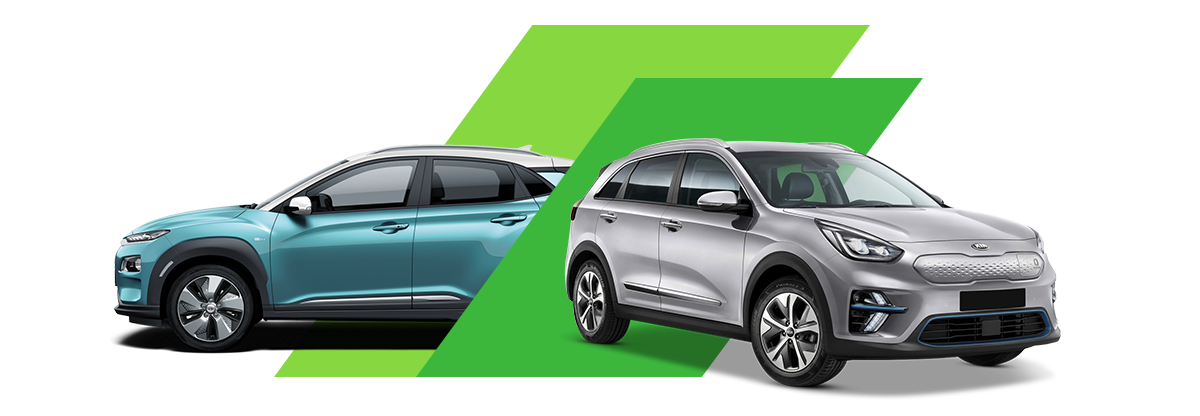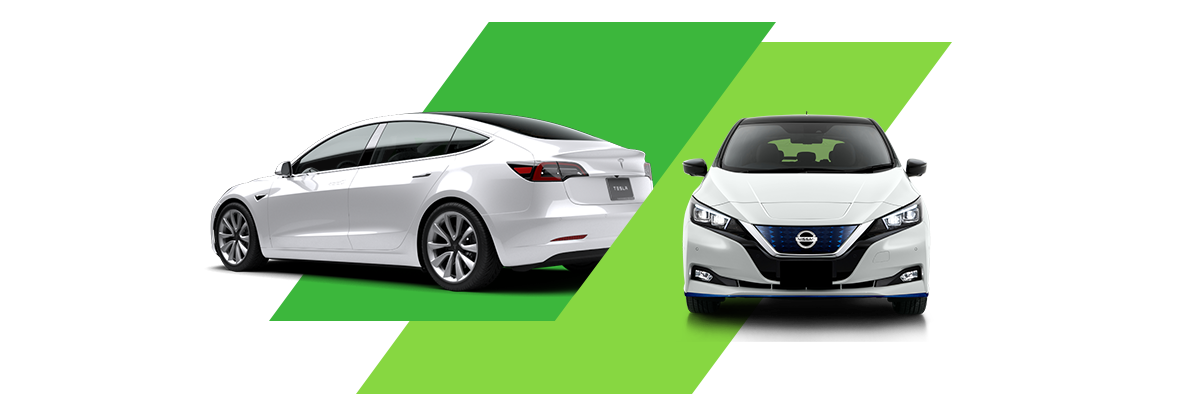
The different fuel types explained
There are many ways in which vehicles are powered. Without getting too technical, here’s a simple guide to the different fuel types currently available and how they work.
Petrol
One of the most widely used forms of fuel in cars is usually unleaded petrol. It’s made by distilling petroleum and is used in internal combustion engines to provide propulsion. A mixture of fuel and air is injected in to the vehicle’s chamber, which is compressed and then ignited by a spark plug.
Diesel
Another popular fuel, favoured by heavy-duty vehicles or those that do long journeys, is diesel – which is created from crude oil. For diesel vehicles, air is injected in to the cylinder and is compressed almost double the amount as a petrol engine. This generates heat, leading to spontaneous burning of the fuel when it is injected.
Electric
Seen by many as a cleaner fuel, electricity can be used as a fuel to power vehicles. It takes the form of battery packs within the vehicle. These batteries require regular recharging to top-up with electricity.
Some electric vehicles are 100% electric, whilst others are hybrids that combine a vehicle’s traditional combustion engine with an electric motor. It means driving the engine can help to charge the electric motor as it goes.
Most power plants produce electric by combustion or nuclear energy. Cleaner energy sources include kinetic energy such as water and wind, as well as solar and geothermal power.
Hydrogen
Hydrogen makes up most of the universe. It is colourless, odourless, tasteless and non-toxic. In fact, the stars are mostly hydrogen. When you mix hydrogen with oxygen it creates electricity, making it a useful fuel source. You can refuel hydrogen in a similar way you would a petrol or diesel-fuelled vehicle. However, there are only a limited number of hydrogen re-fuelling stations in the UK at present.
Biofuels
Another ‘green’ alternative is biofuels, these are fuels produced from biomass, which include plant and animal waste. They are a large source of renewable energy and can help to reduce carbon dioxide emissions. For transport, biofuels are blended with petrol or diesel, effectively reducing the overall CO2 output.
The two main types of biofuels are ethanol and biodiesel. The use of biofuels is common in heavy-duty road sectors, such as trucks.
Compressed natural gas (CNG)
CNG is natural gas mainly made up of methane and is stored under high pressures. CNG produces few harmful emissions and is considered clean and efficient as it contributes minimal greenhouse gas emissions. CNG’s use for vehicles is more common in commercial vehicle sectors such as vans and trucks as they tend to have more spare storage space for the CNG cylinders.
Liquefied petroleum gas (LPG)
LPG is a hydrocarbon gas that exists in a liquid form. Its two main forms are propane and butane. It is a by-product of the processing of natural gas liquids. When used in the vehicle sector it is often referred to as autogas.
LPG is considered a low-carbon fuel and therefore a good alternative to solely using petrol. It is also significantly cheaper than petrol. Vehicles can be converted to be dual-fuel using either the petrol tank or a newly fitted LPG tank.

The different vehicle types to choose from
Here’s a guide to all the main vehicle types out there – whether it’s a vehicle with an internal combustion engine (ICE) or totally 100% battery electric vehicle (BEV), or a combination of both in the form of a hybrid. Knowing the differences between vehicle types can make a big difference to choosing the one that’s right for you.
Internal combustion engine (ICE)
This is the type of vehicle most people will be familiar with. In all ICE vehicles the engine generates power by the burning of fossil fuels such as petrol and diesel.
ICE vehicles are still popular today due to the wide network of petrol and diesel fuelling stations across the UK. Petrol and diesel ICE vehicles also have different ways to compare against each other. A simple measurement is the miles per gallon (MPG) that the vehicle can achieve; the higher the MPG the more fuel efficient the vehicle.
Diesel pros and cons
Diesel vehicles tend to have higher MPGs which is why they are suitable for long, motorway style driving. On the other hand, they tend to produce more nitrogen oxide (NOx) than petrol as they operate at higher temperatures. NOx gases are considered harmful to the environment as a major pollutant and a contributor towards smog, which affects air quality. For this reason, petrol vehicles are considered more suitable for city based, small journeys.
Both diesel and petrol vehicles also emit carbon dioxide (CO2), which acts as a greenhouse gas when emitted into the atmosphere. High concentrations of CO2 contribute towards global warming.
Battery electric vehicle (BEV)
Examples: Nissan Leaf, Tesla Model 3
The power for a BEV is taken from the vehicle’s onboard battery packs. The battery requires charging from an external electric source. This can be at home or on the road, in the form of an electric vehicle charging point or 3-point plug. People typically charge their BEVs through a combination of home, public, and workplace charging.
Because BEVs do not emit any CO2, they are considered an environmentally friendly transport option. There are also tax advantages if they are taken as a company car, as well as low in-life costs. The battery capabilities of BEVs have increased significantly in recent years, alleviating some initial fears around ‘range anxiety’.
They are capable of being driven on a single charge of battery for most people’s journeys.
Plug-in Hybrid Electric Vehicle (PHEV)
Examples: BMW 330e, Volvo XC60 PHEV
A PHEV uses a combination of sources to generate power. It’s usually a small on-board electric battery providing a limited amount of pure electric range as well as a traditional combustion engine powered by either petrol or diesel.
Ideal for a variety of journeys
This type of vehicle is ideal for those making journeys, where they can complete shorter trips on the pure electric battery and then use the combustion engine for longer journeys. The battery on a PHEV is the same as a BEV battery, although smaller, and will therefore require charging from an external power source.
Get a feel for electric
PHEVs are often seen as a stepping stone to fully electric, where drivers can test whether the technology is suitable for their travel needs whilst also taking advantage of some of the tax incentives available, such as lower company car tax if taken as an employee benefit, as well as discounted road tax.
Fuel Cell Electric Vehicle (FCEV)
Example: Hyundai NEXO
A FCEV is a type of electric vehicle which uses a fuel cell, instead of an electric battery, to power the on-board motor. Most often, FCEVs use hydrogen for their power.
There’s only a limited number of vehicles available in the UK which use hydrogen as their main power source, this is partly due to the low number of refuelling stations. As they do not emit any CO2 there are the same tax advantages of a FCEV as there are for pure electric cars.
Full hybrid
Examples: Toyota Prius, Kia Optima Hybrid
A hybrid vehicle uses a combination of the combustion engine and an electric battery to power the vehicle. Throughout a journey the vehicle determines which is the most appropriate power source to use at each point. The electric can be used to boost the vehicle’s power or as the main power source to drive the vehicle.
Charged from within
The electric power is created by an in-built generator, meaning that you do not have to plug the vehicle in to recharge the battery.
Mild hybrid
Example: Suzuki Ignis
With a mild hybrid the onboard electric motor can’t power the vehicle by itself. Instead, it simply assists the traditional combustion engine. The electric battery is also considerably smaller than that found in a full hybrid.
Aids driving when you need it most
The electric motor provides extra power to the engine when needed, such as merging on to a motorway and hill climbs. When the car is coasting or cruising, the engine spins the generator which creates electricity and recharges the battery. This means that with a mild hybrid you do not need to plug in the vehicle to recharge the electric battery element.
